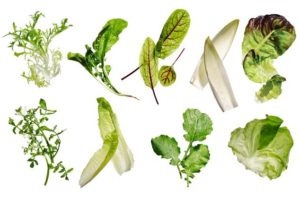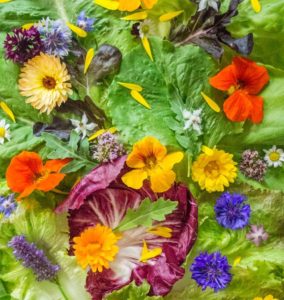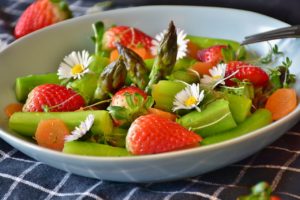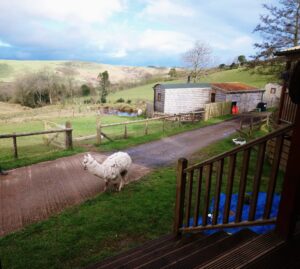
What makes up a good salad?
There are so many excited things that can go into salad, not just some boring iceberg (which lack nutritional value anyway) or some wedge of tomato or maybe just a bit of garnish on the side of the plate. We have this idea that a salad is “just” some boring combination of everyday salad items. I hope after reading this below you will get some inspiration and understanding how salads are important part of the menu which are served as a part of meal or even as a main dish, especially in plant-based cuisine. 😉
How to prepare a salad: First, I would recommend washing salad leaves either just in a bowl of water or with so-called veggie wash (which removes wax, dirt, and residues) as you can never be sure who has touched them or what chemicals have been sprayed on them. This is not just for the loose salads, but any shop bought packaged salad as well. Did you know that so, called “prewashed” salads have been washed with chlorine-like chemicals which remove bacteria and unfortunately vital nutrients too?
So, the best thing would be to buy organic salads whenever you can, (I buy mine mostly from Waitrose, Riverford or M&S), where they are grown without using harsh chemicals and pesticides.
A little tip: Salad leaves are often very delicate and can bruise easily if handled without care. I see it all the time when in the grocery shop, where lots of people place other foods on top of the salad and other delicate ingredients and wonder why they spoil so quickly. So, now you know why, when it comes to shopping and storing your salad leaves, try to put them on the top of your other foods to minimize/avoid bruising. 😉
Types of salads: Most popular salads are basic round lettuce, oakleaf and colour fading iceberg at least here in  the UK. My favorite salads are romaine lettuce, baby spinach, Swiss chard, beetroot leaves and watercress. You can also try some rocket with pepper flavour and mix it with other salad leaves, it will give a nice kick to your dish. Other salads worth to try are mustard leaves, sorrel, endive, chicory, radicchio and dandelion.
the UK. My favorite salads are romaine lettuce, baby spinach, Swiss chard, beetroot leaves and watercress. You can also try some rocket with pepper flavour and mix it with other salad leaves, it will give a nice kick to your dish. Other salads worth to try are mustard leaves, sorrel, endive, chicory, radicchio and dandelion.
Cooked salads: Not only raw vegetables can be used in salads even though that is what I use most. You can also use some crunchy cooked veggies such as green beans, peas, carrots, corn, Savoy cabbage, roast pumpkin, red bell pepper, zucchini or beetroot.
Have you tried some cooked salad variations such as couscous, bulgur wheat, quinoa, rice or pasta. Not yet? Now is the time to do some experiments. 😉
Herbs: I love using fresh herbs especially parsley, basil, coriander and mint as they add such great flavour to the meal.

Edible flowers: Yes, you have read it right, there are some lovely flowers that are edible as well. With their powerful and unique flavors, textures and colors, edible flowers have gained popularity as a creative and innovative ingredient for the culinary world. They are added to foods to provide flavour, aroma, and decoration. For best flavor, flowers should be fresh and harvested early in the day.
Here are some safe edible flowers: lavender, roses, nasturtiums, passion flower, rosemary, chamomile, English daisy, English marigold, geranium, dandelion, chicory, chives, Chinese hibiscus, bergamot, anise etc.
Dressings: There are numerous ready-made bottled dressings on the market today which in most cases lack the nutritional value by containing cheap and low-quality ingredients (stale herbs, cheap vinegar and are full of weird starches and gums to keep them emulsified).
You can easily buy the basic fresh ingredients to make your own dressing for half the price and it will be so much healthier than anything from a bottle regardless whose famous name is on the label.
Oil: I only use some good quality organic cold pressed olive oil, extra virgin one has the best flavour. There are so many types of oils out there from nut oils to avocado oils, but the trouble is that there are in most cases refined oils, lacking their nutritional value and do not digest as well as unrefined/cold pressed oils.
Vinegar: There are red, white, cider and balsamic vinegars to choose from. I personally like to use balsamic  vinegar.
vinegar.
Please do watch out for added sulphites! These food preservatives can cause bronchoconstriction- wheezing and difficulty breathing as well as shortness of breath, nausea, stomach cramps, diarrhea, hives, swelling, tingling sensations etc.
Go for an organic version like we do to be on a safe side.
A few last words: Just like any other dish, a delicious salad can be only great and nutritious as the quality of the ingredients in it. Go for fresh, colourful and in-season produce. Organic is always recommended.
I wish you all the best in experimenting with lovely and healthy ingredients for your amazing salad. 😉
 Previous Post
Previous Post Next Post
Next Post


